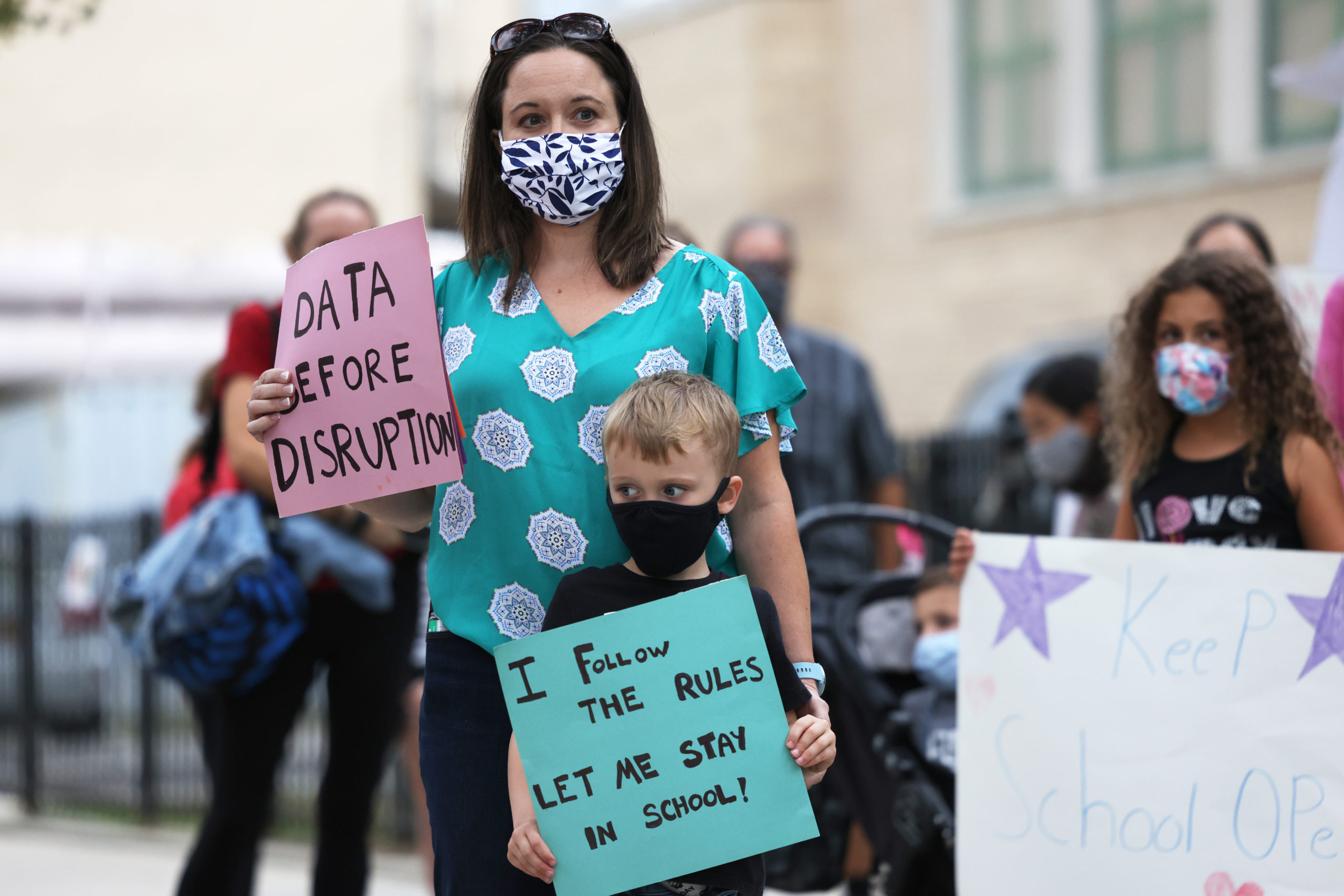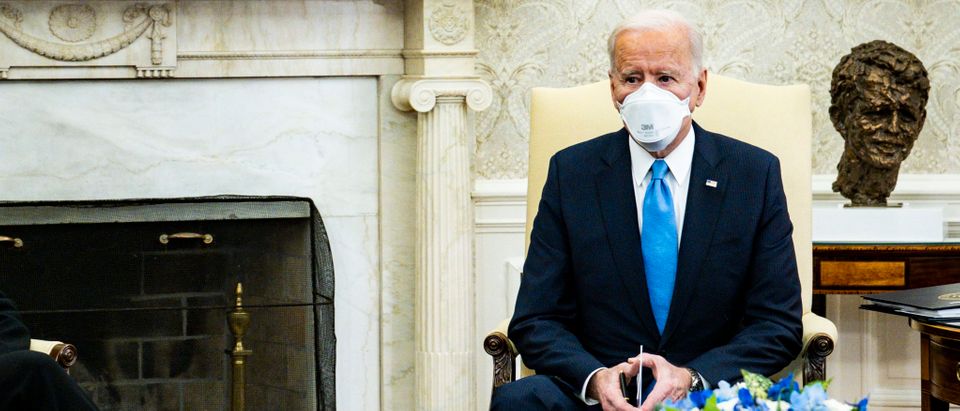- Emergency funding for schools included in President Joe Biden’s coronavirus relief package, intended to help schools immediately return to in-person classes, won’t be fully spent until 2028.
- Just $38.6 billion of the $128.6 billion allocated for emergency school funding in Biden’s nearly $2 trillion coronavirus relief package will be spent by the end of 2022, according to the Congressional Budget Office.
- “The President’s plan would make sure we have every resource we need to defeat this virus and get life back to normal, including $130 billion to help ensure our kids can go back to school safely,” White House Press Secretary Jen Psaki said recently.
Emergency funding for schools included in President Joe Biden’s coronavirus relief package, intended to help schools immediately return to in-person classes, won’t be fully spent until 2028.
Just $38.6 billion of the $128.6 billion allocated for emergency school funding in President Joe Biden’s proposed coronavirus relief package will be spent by the end of 2022, according to a Congressional Budget Office (CBO) report released Monday. The Biden administration has repeatedly stated that public schools nationwide need the funding in order to return to in-person classes, but hasn’t explained that the vast majority of the funds will be spent after 2022.
“The President’s plan would make sure we have every resource we need to defeat this virus and get life back to normal, including $130 billion to help ensure our kids can go back to school safely,” White House Press Secretary Jen Psaki said during a press briefing Feb. 3. (RELATED: Teachers Unions Still Oppose Schools Immediately Reopening Despite CDC Study Showing Little Risk)
“The purpose of giving funding, or supporting funding and getting it to school districts is to ensure that teachers are safe, that kids are safe, that there is necessary [personal protective equipment], that there is ventilation in the school, that there is the environment that allows for children to return safely,” Psaki said later in the briefing. “And that is the President’s focus.”
The White House’s official coronavirus relief strategy plan released in January promised that the $130 billion in funding would help districts avoid lay-offs, close budget gaps and implement screening testing. The plan didn’t mention that the funds would be allocated over a seven-year period.

Parents and kids hold signs during a protest in favor of reopening schools in New York City. (Michael M. Santiago/Getty Images)
Teachers’ unions, meanwhile, have consistently opposed efforts to reopen schools throughout the pandemic. The two largest national teachers unions, the American Federation of Teachers and National Education Association (NEA) also supported Biden’s emergency school funding plan that will be spent by 2028. (RELATED: Chicago Mayor Accuses Teachers Union Of Putting Politics Before Kids In School Reopening Fight)
“Making these necessary investments is the only way to ensure that school buildings and campuses are reopened in a safe and equitable manner and that all students have what they need to thrive,” NEA President Becky Pringle said in a statement.
Nearly $70 billion in emergency funding for schools has already been allocated to states throughout the pandemic, according to the Committee for a Responsible Federal Budget.
In December, Biden pledged to reopen most public schools in his first 100 days as president. However, Psaki clarified last week that the plan was to open most schools for in-person classes once a week by the president’s 100th day in office.
A recent Centers for Disease Control and Prevention (CDC) study showed that re-opening schools posed little risk to students and teachers. CDC Director Rochelle Walensky said on Feb. 3 that teachers don’t need a vaccination before returning to in-person classes.
After the administration rebuked Walensky’s comments, though, the CDC backtracked and issued guidance Friday that would encourage most schools to stay closed. Eighty-nine percent of all children in the U.S. live in a county classified as a “red zone” under the guideline, which means they would have to stick to remote learning, according to CNN.
All content created by the Daily Caller News Foundation, an independent and nonpartisan newswire service, is available without charge to any legitimate news publisher that can provide a large audience. All republished articles must include our logo, our reporter’s byline and their DCNF affiliation. For any questions about our guidelines or partnering with us, please contact licensing@dailycallernewsfoundation.org.












